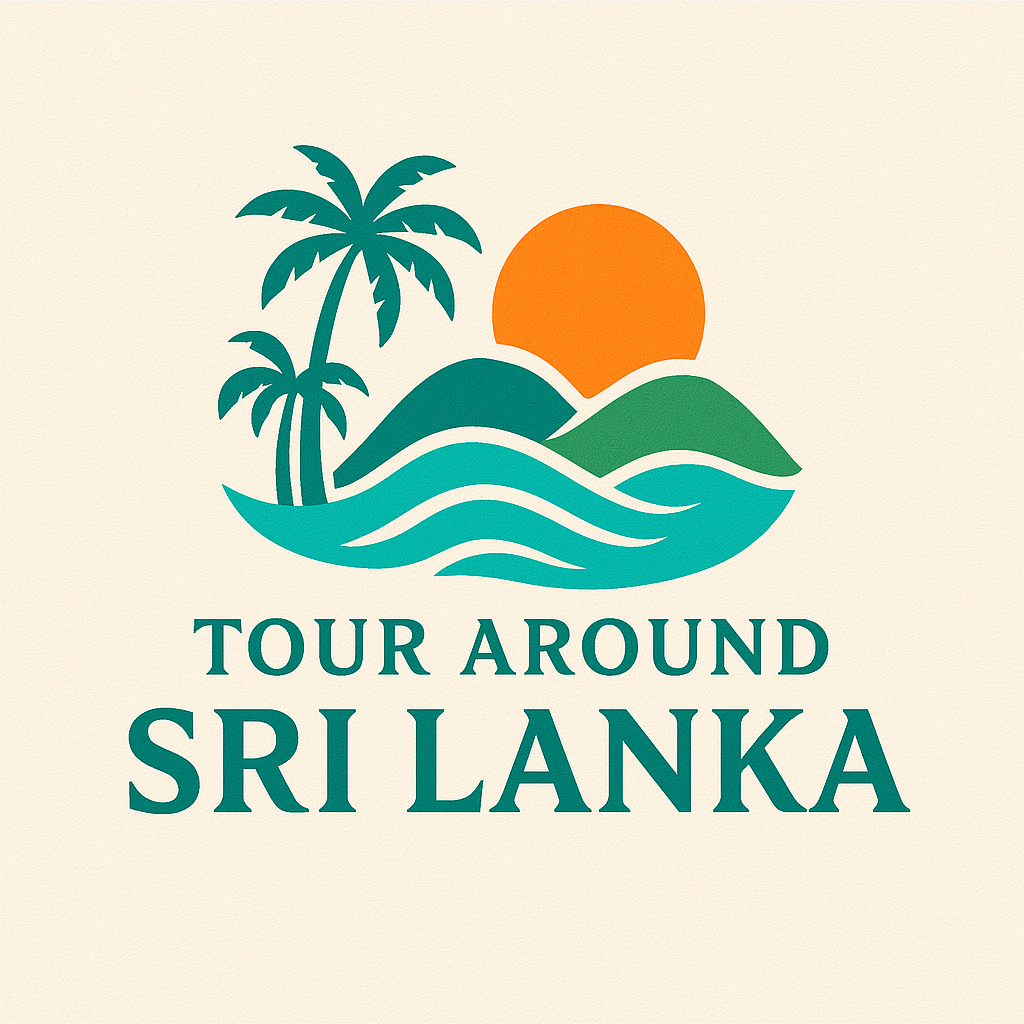Planning your trip to Sri Lanka? Most visitors need to obtain an Electronic Travel Authorization (ETA) before arrival. The process is quick, simple, and can be completed online. Here’s everything you need to know:
Planning a trip to Sri Lanka? These Sri Lanka travel tips will help you make the most of your journey. Sri Lanka, known for its pristine beaches, lush tea plantations, wildlife safaris, and rich cultural heritage, is a must-visit destination. Before you go, ensure your ETA (Electronic Travel Authorization) is approved and carry some local currency (LKR) for convenience. The best time to visit depends on your itinerary: December to April for the west and south coasts, and May to September for the east coast. Getting around Sri Lanka is easy with scenic train rides, tuk-tuks for short distances, and private drivers for hassle-free travel. Dress modestly when visiting temples, remove shoes and hats, and enjoy local cuisine like rice & curry, hoppers, and kottu roti. Pack light clothes, sunscreen, and insect repellent, and always secure your valuables. Follow these tips for a safe and unforgettable Sri Lanka adventure.
Required for most travelers: All foreign nationals (except those from Maldives, Singapore, and Seychelles) need a visa to enter Sri Lanka.
Visa-free / Free ETA countries: Citizens of India, China, Indonesia, Russia, Thailand, Malaysia, and Japan currently receive a free 30-day double-entry ETA.
Exemptions: Nationals of Maldives, Singapore, and Seychelles can visit visa-free for up to 30 days.
Yes, Sri Lanka provides visa on arrival, but applying online through the official ETA website before traveling is much faster and avoids long airport queues.
1 Apply online through the official ETV Website (always use the official government portal to avoid scams).
2 Fill in details such as your passport information, travel dates, and accommodation details.
3 Pay the visa fee (if applicable) by credit or debit card.
Receive approval by email—usually within 24 hours.
💡 Tip: Print or save a digital copy of your ETA to show immigration on arrival.
Normally issued within 24 hours.
To be safe, apply at least 48 hours before departure.
30-Day ETA (Single or Double Entry) – Standard visa for leisure, sightseeing, visiting family/friends.
Longer Stay Visas (for frequent travelers) – Available for 6 months, 1 year, 2 years, or even 10 years (multiple-entry).
The initial ETA is valid for 30 days.
You can extend up to 90 days by visiting the Department of Immigration in Colombo.
Extension fee: Around USD 40–50.
No paid work or business activities.
No long-term study or volunteering.
Visa is strictly for tourism, leisure, and short cultural visits.
Make sure your passport is valid for at least 6 months from the date you enter Sri Lanka.
Keep your return or onward flight details ready (immigration may ask).
Save a digital and paper copy of your ETA approval.
Apply early during peak travel seasons to avoid delays.
Yes. Almost all travelers need a visa (Electronic Travel Authorization – ETA) to enter Sri Lanka. Only citizens of Maldives, Singapore, and Seychelles are visa-free for short visits.
Yes, Sri Lanka provides visa on arrival, but applying online through the official ETA website before traveling is much faster and avoids long airport queues.
Answer. Lorem ipsum dolor sit amet, consectetur adipiscing elit. Curabitur id suscipit ex. Suspendisse rhoncus laoreet purus quis elementum. Phasellus sed efficitur dolor, et ultricies sapien. Quisque fringilla sit amet dolor commodo efficitur. Aliquam et sem odio. In ullamcorper nisi nunc, et molestie ipsum iaculis sit amet.
Answer. Lorem ipsum dolor sit amet, consectetur adipiscing elit. Curabitur id suscipit ex. Suspendisse rhoncus laoreet purus quis elementum. Phasellus sed efficitur dolor, et ultricies sapien. Quisque fringilla sit amet dolor commodo efficitur. Aliquam et sem odio. In ullamcorper nisi nunc, et molestie ipsum iaculis sit amet.
Answer. Lorem ipsum dolor sit amet, consectetur adipiscing elit. Curabitur id suscipit ex. Suspendisse rhoncus laoreet purus quis elementum. Phasellus sed efficitur dolor, et ultricies sapien. Quisque fringilla sit amet dolor commodo efficitur. Aliquam et sem odio. In ullamcorper nisi nunc, et molestie ipsum iaculis sit amet.
Answer. Lorem ipsum dolor sit amet, consectetur adipiscing elit. Curabitur id suscipit ex. Suspendisse rhoncus laoreet purus quis elementum. Phasellus sed efficitur dolor, et ultricies sapien. Quisque fringilla sit amet dolor commodo efficitur. Aliquam et sem odio. In ullamcorper nisi nunc, et molestie ipsum iaculis sit amet.
Answer. Lorem ipsum dolor sit amet, consectetur adipiscing elit. Curabitur id suscipit ex. Suspendisse rhoncus laoreet purus quis elementum. Phasellus sed efficitur dolor, et ultricies sapien. Quisque fringilla sit amet dolor commodo efficitur. Aliquam et sem odio. In ullamcorper nisi nunc, et molestie ipsum iaculis sit amet.
Answer. Lorem ipsum dolor sit amet, consectetur adipiscing elit. Curabitur id suscipit ex. Suspendisse rhoncus laoreet purus quis elementum. Phasellus sed efficitur dolor, et ultricies sapien. Quisque fringilla sit amet dolor commodo efficitur. Aliquam et sem odio. In ullamcorper nisi nunc, et molestie ipsum iaculis sit amet.
One of the best things about Sri Lanka is that it’s a year-round destination, thanks to its tropical climate and two monsoon seasons that affect different parts of the island at different times. This means that whenever you plan your trip, there will always be a region enjoying good weather.
West & South Coasts + Hill Country (December to March):
If you’re dreaming of golden beaches in Bentota, Mirissa, or Galle, or planning to explore the tea plantations and mountain towns of Kandy, Nuwara Eliya, and Ella, the best time is December to March. During these months, the weather is dry and sunny, making it perfect for beach days, surfing, and train journeys through the lush hill country.
East Coast (April to September):
Sri Lanka’s east coast—home to Trincomalee, Arugam Bay, and Pasikudah—shines during the April to September period. This is the dry season on the eastern side, ideal for whale watching in Trincomalee, surfing in Arugam Bay, or relaxing on the calm, crystal-clear beaches of Pasikudah.
Cultural Triangle (Year-Round):
The central region, including Sigiriya, Anuradhapura, Polonnaruwa, and Dambulla, can be visited throughout the year, though the climate is generally hottest between May and August. Early mornings and evenings are the best times for exploring ancient sites.
Wildlife Watching:
For safaris in Yala National Park, the dry season from February to July is the best chance to spot leopards, elephants, and other
wildlife. In Summary:
Dec–Mar: West, South, Hill Country
Apr–Sep: East Coast
Year-round: Cultural Triangle
Feb–Jul: Best for wildlife safaris
No matter when you visit, Sri Lanka promises stunning landscapes, rich culture, and warm hospitality. You simply need to choose the region that suits the season!
Transport:
Sri Lanka offers a variety of transport options depending on your budget and travel style. For short distances, tuk-tuks are everywhere and provide an authentic local experience—just remember to agree on the fare before starting the ride, or ask for the meter to be used. For longer journeys, comfortable private cars with drivers can be hired, while budget travelers often choose buses or trains, which are affordable and connect most parts of the country. The train ride from Kandy to Ella, for example, is world-famous for its breathtaking scenery. Domestic flights are also available between certain cities if you prefer faster travel.
Currency:
The official currency is the Sri Lankan Rupee (LKR). Banknotes come in denominations from 20 to 5,000 rupees, and you’ll find coins in smaller values. ATMs are widely available in cities and tourist towns, and most hotels, restaurants, and shops in major areas accept credit or debit cards. However, it’s always wise to carry some cash for tuk-tuks, local markets, and small shops where card facilities may not be available. Currency exchange is easy at banks, airports, or licensed money changers, but avoid unauthorized street exchanges.
Safety:
Sri Lanka is generally considered a safe destination for travelers. Locals are warm and welcoming, and violent crime against tourists is rare. As with any trip, take standard precautions—keep your belongings secure, avoid carrying large sums of cash, and be cautious when traveling late at night. Solo female travelers should dress modestly in rural or religious areas and use trusted transport services. Health-wise, bottled water is recommended, and it’s best to have travel insurance for peace of mind.
Are you ready to plan your dream trip? Let us be your Sri Lanka tour operator and trusted travel agent in Sri Lanka. Together, we’ll create a journey filled with unforgettable memories.

Email us using our simple form and we'll respond within 1 working days.
